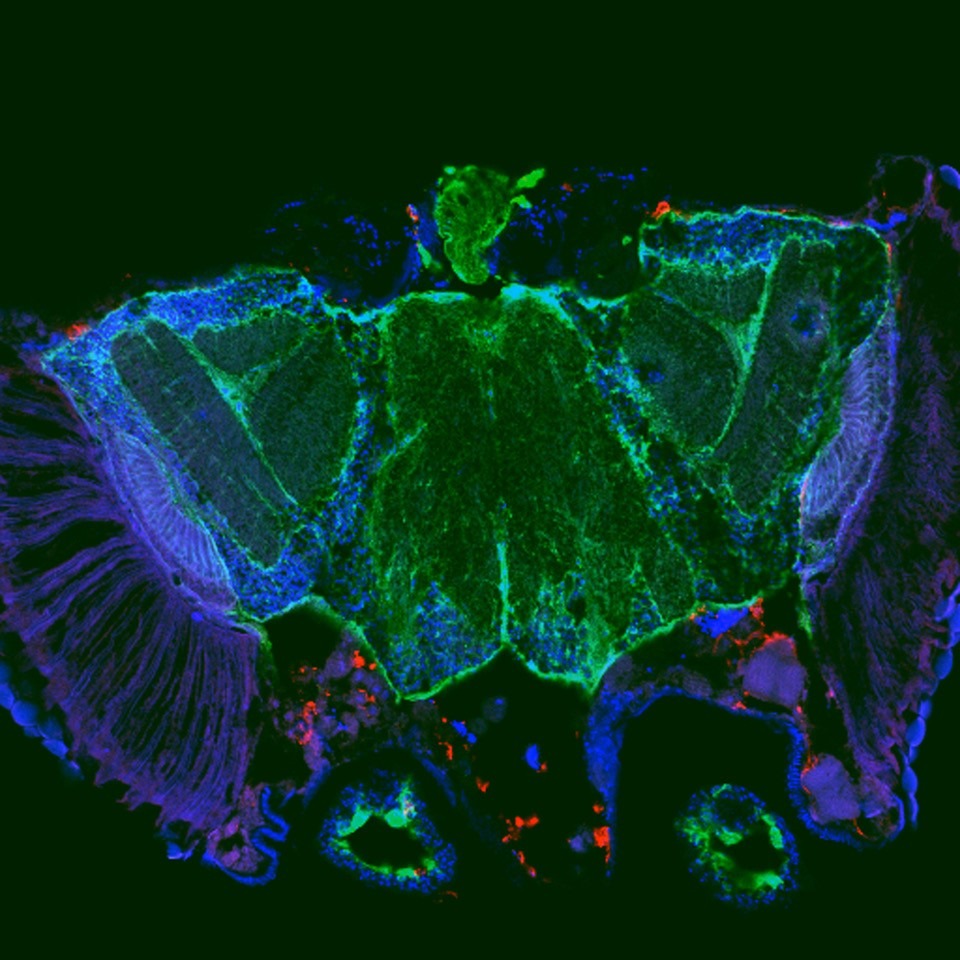Glial Phagocytic Receptors Promote Neuronal Loss in Adult Drosophila Brain
Research by: Dr. Estee Kurant
- December 1, 2021
Glial phagocytosis is critical for the development and maintenance of the central nervous system in vertebrates and flies and relies on the function of phagocytic receptors to remove apoptotic cells and debris. Glial phagocytic ability declines with age, which correlates with neuronal dysfunction, suggesting that increased glial phagocytosis may prevent neurodegeneration. Con- tradicting this hypothesis, we provide experimental evidence showing that an elevated expression of the phagocytic receptors Six-Microns-Under (SIMU) and Draper (Drpr) in adult Drosophila glia leads to a loss of both dopaminergic and GABAergic neurons, accompanied by motor dysfunction and a shortened lifespan. Importantly, this reduction in neuronal num- ber is not linked to neuronal apoptosis, but rather to phosphatidylserine-mediated phagoptosis of live neurons by hyper-phagocytic glia. Altogether, our study reveals that the level of glial phagocytic recep- tors must be tightly regulated for proper brain function and that neurodegeneration occurs not only by defective, but also excessive glial cell function.
The image shows a cryo-section of Drosophila adult head with glia in green, all cell nuclei in blue and the phagocytic receptor SIMU in red found outside the brain.

